#his name is frances shrimpton
Explore tagged Tumblr posts
Text
had to make an emergency new character for dnd LOL but i love them
#his name is frances shrimpton#but everyone calls him frank#and he's a highwayman bard#like think the dick turpin song from horrible histories#like he's a former noble turned robber with an interest in lute-based free jazz#i tried so hard to not be a slutty bard but like literally first sesh i take a night out back to steal his ring under the guise of making o#making out#i think one of frank's bits is that they are flirty but only so they can steal shit#they're lazy as fuck#but they do have a flintlock#txt
0 notes
Photo
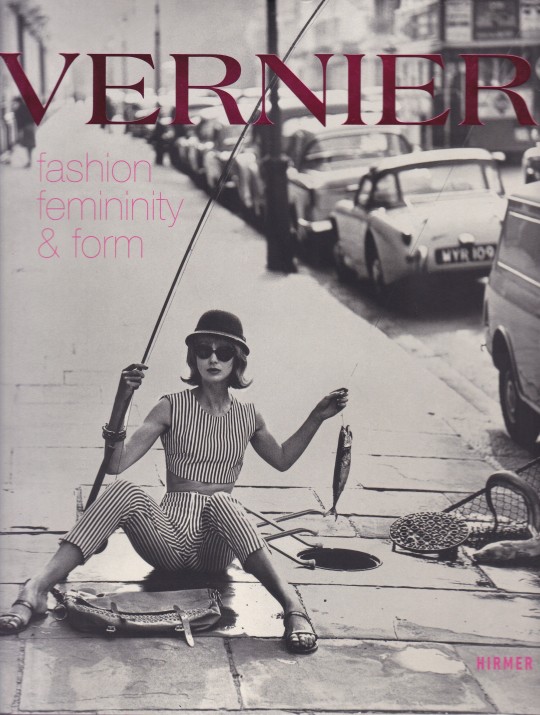







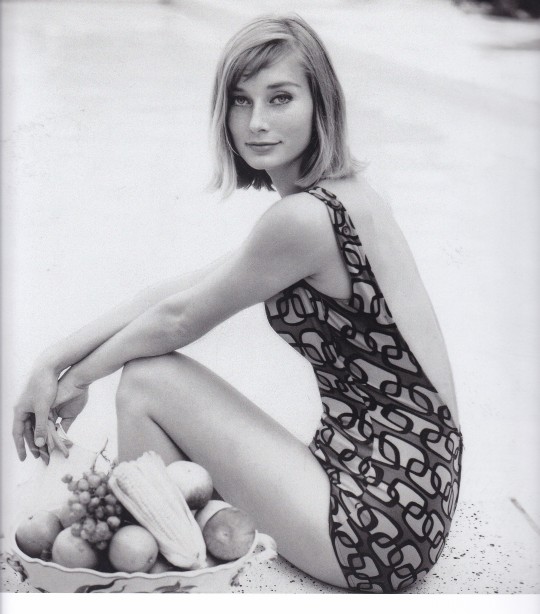

Vernier
Fashion Feminity & Form
Ed. Alistair Layzell , Essays by Robin Muir and Becky E. Conekin
Hirmer Verlag, München 2012, 192 pages, 220 illustrations in black and white, ISBN 978-3777451510
euro 60,00
email if you want to buy [email protected]
Eugène »Gene« Vernier worked for Vogue in London as a fashion photographer between 1954 and 1967 at the birth of one of the most exciting periods in British, European and American fashion history. For this book, Vernier has chosen over 100 of his own favourite images from the British edition of Vogue that featured his work in that period. Vernier was innovative in his choice of locations and in the way he captured their essence in his backgrounds. But most especially his skill was in the way he composed his shots, blending the elements of the model, the clothes, moment and place. Shooting of-the-moment looks from the likes of Christian Dior and Emilio Pucci and top models including Celia Hammond, Jean Shrimpton, and current Vogue creative director Grace Coddington, Vernier worked with some of the biggest names in the industry. The Vernier ‘look’ is one of femininity; he captured his models when they were relaxed, enjoying wearing the clothes and confident that the photographer would only show both model and clothes at their best. He saw himself as working not only for the magazine, but also for the clothes and accessories makers, and most especially for the readers of Vogue. Within the frame, he was an artist. Vernier was born in 1920 in southern France. During the war he worked as a war correspondent and a newsreel cameraman, documenting the exploits of the Free French forces under General de Gaulle. He worked for Pathé News in London, before opening his own London studio as a freelance photographer.
16/09/20
orders to: [email protected]
ordini a: [email protected]
twitter:@fashionbooksmi
instagram: fashionbooksmilano, designbooksmilano tumblr: fashionbooksmilano, designbooksmilano
#Vernier#Eugène Vernier#Vogue#British Vogue#fashion photographer#photography books#libri di fotografia#fifties#sixties#locations#fashion history#fashion books#fashionbooksmilano
29 notes
·
View notes
Text
Lucy in London
October 24, 1966
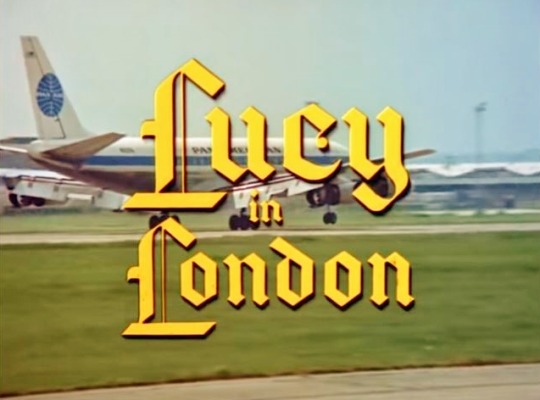
Synopsis
Lucy Carmichael wins a trip to London in a jingle contest. It is a whirlwind, one day tour, with Anthony Newley as her guide. They visit such landmarks as Madame Tussaud's, Carnaby Street, London Bridge, the Palladium Theatre, and an English country manor. On her tour, Lucy gets to sing with the Dave Clark Five, act Shakespeare with Peter Wyngarde, and model mod fashions to a Phil Spector song!
Cast
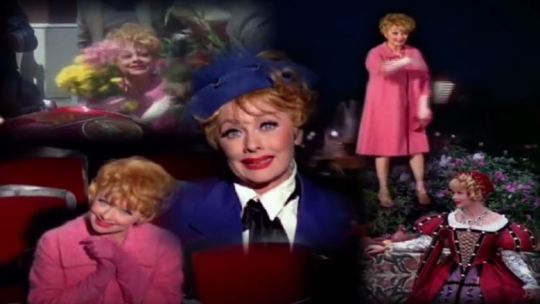
Lucille Ball (Lucy Carmichael) was halfway through her fifth season playing Lucy Carmichael on “The Lucy Show” (1962-1968).
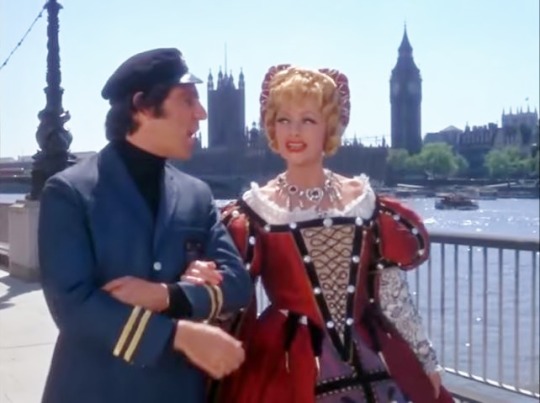
Anthony Newley (Anthony Armstrong Fitz-Faversham) was a London-born actor and singer who was perhaps best known for his collaboration with Leslie Bricusse on the film scores for Doctor Doolittle (1967, in which he also appeared) and Willy Wonka and the Chocolate Factory (1970, in which he also appeared singing the break-out hit “The Candy Man”). In April of 1966, just a month before “Lucy in London” filmed but before the special was aired, he released the film version of Stop the World - I Want To Get Off, a musical which he wrote (again with Bricusse) and starred in as Littlechap in London and New York. In 1965, he starred on Broadway in another musical he co-wrote with Bricusse The Roar of the Greasepaint – The Smell of the Crowd.
Anthony Armstrong Fitz-Faversham is Lucy's tour guide from Royal Luxury Tours Ltd.

Frank Thornton (Customs Official) will be forever remembered as Captain Peacock, the imperious floor walker on “Are You Being Served?” He was also well known for playing Truly for 13 years on “Last of the Summer Wine.” Thornton died in 2013 at the age of 92.
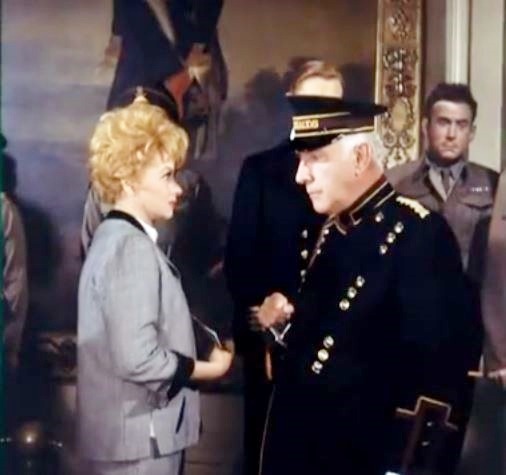
Winifred Hyde White (Hawkins, Madame Tussaud's Guide) was a Gloucestershire-born actor who will probably be best remembered as Colonel Pickering in the 1964 film My Fair Lady. He was twice nominated for Broadway's Tony Award as Best Actor in 1957 for The Reluctant Debutante, and in 1973 for The Jockey Club Stakes.
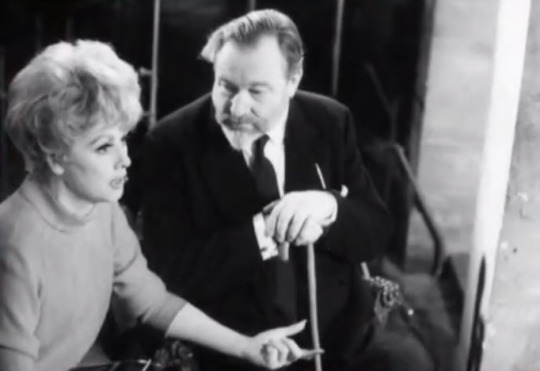
James Robertson Justice (Madame Tussaud's Manager) was known for his bushy beard and booming voice. He is perhaps best remembered as Lord Scrumptious in Chitty Chitty Bang Bang (1963).
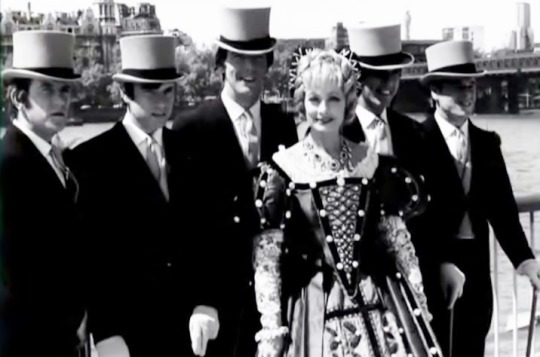
The Dave Clark Five (Themselves) was an English pop rock group made up of Dave Clark, Lenny Davidson, Denis Payton, Mike Smith, and Rick Huxley. Their single "Glad All Over" knocked the Beatles' "I Want to Hold Your Hand" off the top of the UK Singles Chart in January 1964. In 1966 they were regular performers on TV's “Shindig.”

Peter Wyngarde (Himself / Petruchio) was born in France to an English father and French mother. Lucille Ball personally asked Wyngarde to appear in the special having seen him on Broadway in Duel of Angels starring Vivien Leigh in 1960 (while she was appearing in Wildcat). She was said to have been smitten by him, and was determined to find a way for the two of them to act together.
“Lucy may’ve thought I was kidding, but if she wanted to play this straight she would be a marvelous Kate. Her looks are absolutely right as is her vitality. And she’s a good enough actress to be able to do it.” – Las Vegas Sun, October 23, 1966
Edna Morris (Woman at the Shakespeare Festival) was a Lancashire-born actress whose screen acting career began in 1946 at the age of 40.
Dennis Gilmore ('Pops' the Stage Doorman) was a Middlesex-born actor whose screen career spanned from 1953 to 2010.
Joby Blanshard was a Yorkshire-born actor who was seen on stage and screen from 1954 to 1986. He is perhaps most famous for playing Colin Bradley in 32 episodes of the early 1970s 'science-fact' series “Doomwatch.”
Jenny Counsell has just three other screen credits (as per IMDB) the last of which was an uncredited appearance in Carry On Again Doctor (1969).
Bonnie Paul was the step-daughter of Burl Ives.
John Stone was a Welsh character actor and playwright.
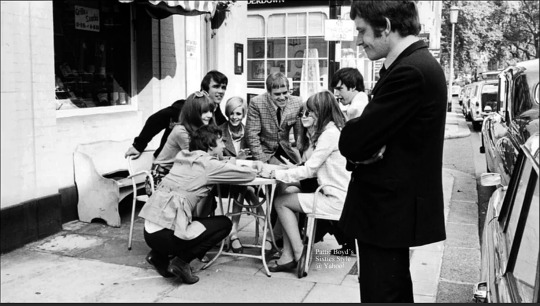
Twiggy was born Lesley Lawson. She became the world's number one model at the time, so named for her slender figure. Twiggy eventually turned to acting on both stage and screen.
Chrissie Shrimpton was a model who (at the time) was dating Mick Jagger. She is the sister of Vogue model Jean Shrimpton.
Jenny Boyd was a fashion model and the sister of Pattie Boyd, who was then married to George Harrison of the Beatles. Boyd left modeling and took up transcendental meditation.
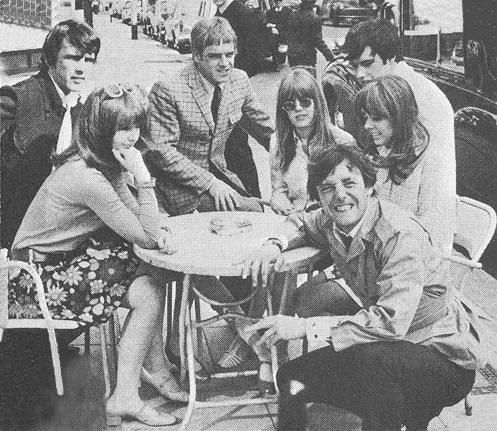
Samantha Juste became known on British television in the mid-1960s as the "disc girl" on the BBC’s “Top of the Pops.” In 1968 she married Micky Dolenz of the Monkees.
Roy Rowan (announcer) was the off-camera announcer for every episode of “I Love Lucy” as well as “The Lucy Show” and “Here’s Lucy.” He was also the voice heard when TV or radio programs were featured on the plot of all three shows. He made a couple of on screen appearances as well.
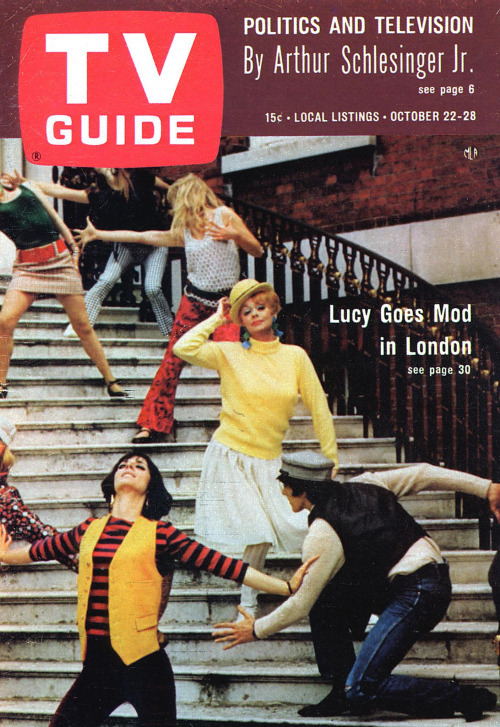
This special was part of Lucille Ball's 1966-67 contract negotiations with CBS. She was supposed to star in three such 'travel' specials, but this is the only one that was ever realized. Ball originally planned to co-star with Mitzi Gaynor as two nuns touring Europe, followed by a French-based production called “Lucy in Paris,” and a Middle Eastern-set comedy called “Lucy in Arabia” or “Lucy in the Desert.”
This CBS special (in color!) first aired on October 24, 1966 in “The Lucy Show” time slot, but because it ran one hour, it pre-empted “The Andy Griffith Show.”
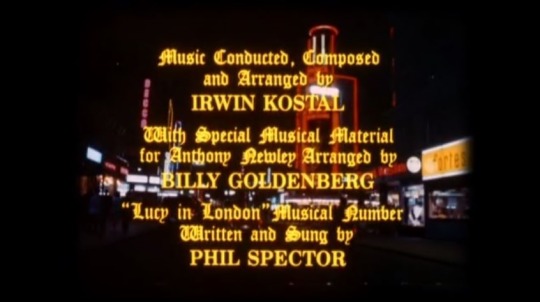
This script was written by Ron Friedman and Pat McCormick. This is Friedman's only time writing for Lucille Ball. Also in 1966, Friedman was nominated for a Primetime Emmy Award for an episode of “The Danny Kaye Show.” McCormick went on to write one episode of “Here's Lucy” in 1969. The special was co-produced and choreographed by David Winters, who had played A-Rab in the 1961 film West Side Story.
The budget for the special was $500,000. It came in under budget.
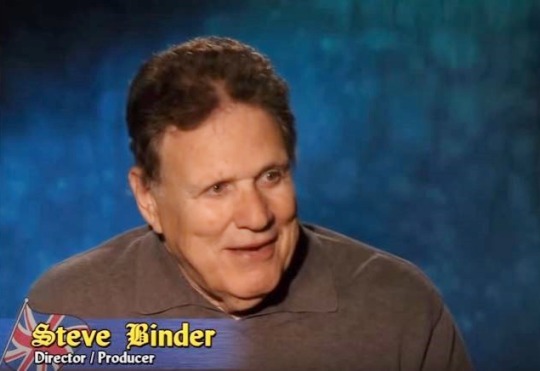
The special was produced and directed by Steve Binder, who specialized in award shows, concerts, and TV spectacles. It was sponsored by the Monsanto Company.

Regular Lucy viewers may remember that Lucy Ricardo went to London during season 5 of “I Love Lucy” although the cast and crew never left Hollywood to film, as they do here. “Lucy in London” was Desilu's first international film project, not counting some second unit footage of Cuba and Mexico gathered for “The Lucy-Desi Comedy Hour.” Like Lucy Ricardo, Lucy Carmichael also visits the changing of the guard at Buckingham Palace and spends some time at an English country manor home located just outside London.
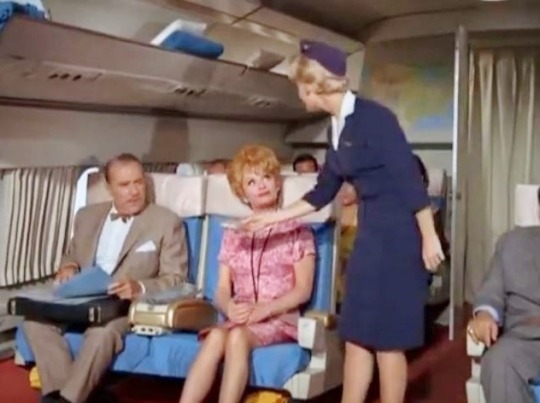
This special was a follow up to “The Lucy Show” episode “Lucy Flies to London” (S5;E6), which was filmed in September 1966, four months after the May location shooting of “Lucy in London.” Lucille Ball later said that May was her favorite month anywhere in the world. “Lucy Flies to London” (S5;E6) was shot completely at Desilu Studios in California, while “Lucy in London” was shot completely on Location in and around London.
The cast was supposed to include actor Laurence Olivier, but he withdrew from the project before filming began. Lord Olivier was mentioned on “I Love Lucy” in “Lucy Meets Orson Welles” (ILL S6;E3).
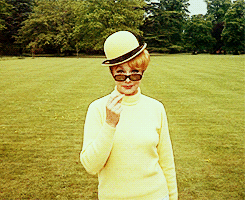
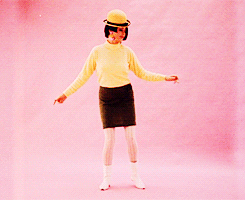
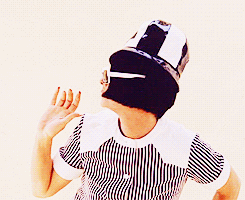

Lucille Ball went through 15 different wigs during the production. Cleo Smith, Ball's cousin and the executive in charge of this production, later recalled that problems arose in photographing the star on the London locations, where the use of heavy stage make-up and filtered lighting that was employed for her studio-based program could not repeated. Ball's biographer Geoffrey Mark Fidelman would later remark that the actress "looked old" throughout the show due to difficulties in establishing flattering lighting for the outdoor sequences.
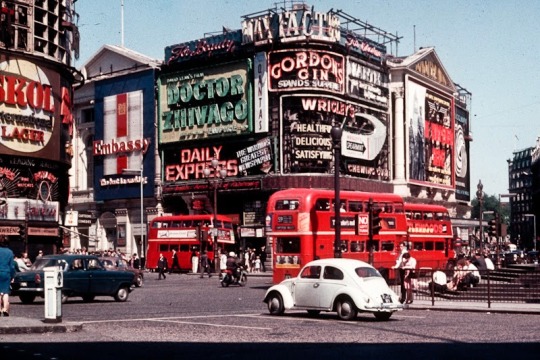
Under the supervision of Cleo Smith, Desilu sent a second unit crew ahead to film scenes with doubles of Lucille Ball and Anthony Newley as they traveled through London and environs on their motorcycle and sidecar.
The special is divided up into acts, like a play, with titles on the screen – in Old English font, naturally!
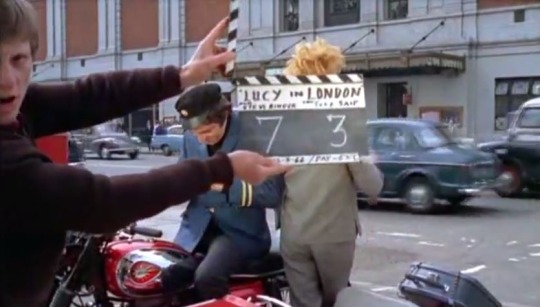
The opening sequence of Lucy stepping off the Pan Am jet used only still photos shot by Life Magazine's Bob Willoughby. His photographs were used in a montage format until Lucy meets her tour guide when traditional film storytelling begins. Director Steve Binder says that this was a creative decision due to the notoriety and artistry of Willoughby, not a cost-saving measure. The sequence also reflects a typical tourist like Lucy's snapshots of their trip, an idea reinforced by the fact that Lucy wears a camera around her neck for much of her time in London.
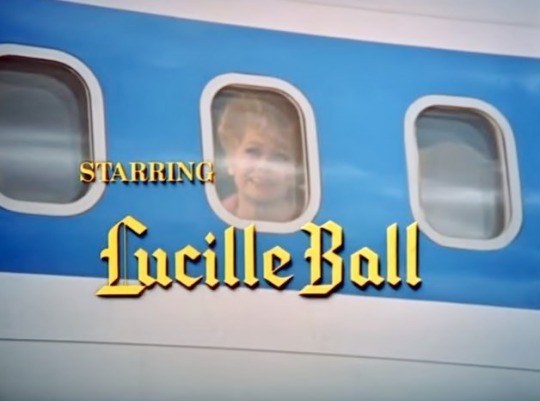
The sequence involving Lucy de-planing from the Pan Am clipper jet had to be accomplished in between flights already on the tarmac at Heathrow. No planes were available to be grounded for a day of shooting. Coincidentally (or perhaps not) Pan Am (which is no longer in existence) was also the carrier when Lucy Ricardo flew home from Europe and from Miami to Havana on “I Love Lucy.”
To ensure that Heathrow and other London locations were accessible to the film crew, a former Buckingham Palace official with the proper 'connections' was engaged by Desilu. It is unclear whether anyone was 'bribed' to open doors, but some locations did charge a user fee, which Desilu gladly paid. When Desilu asked about police protection for Lucille Ball during their shoot near London Bridge, Scotland Yard replied that they didn't do that for anyone – not even the Queen! They did, however, guarantee that if the crew did not block traffic and cause any pedestrian problems, they would be sure all went well.
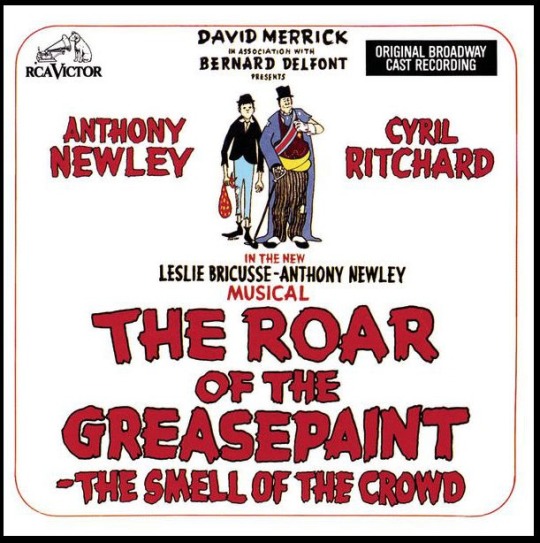
Newley sings “On a Wonderful Day Like Today” as he zooms off on his motorcycle with Lucy in his 'top drawer' sidecar. A chorus of schoolgirls on bicycles join in singing “The Beautiful Land.” Newley then sings a bit of “Sweet Beginning” as they drive through Piccadilly Circus. These songs are all from the musical The Roar of the Greasepaint – The Smell of the Crowd, which Newley co-wrote with Leslie Bricusse and starred in on Broadway in 1965. This is the show that gave Cleo Smith the idea to cast Newley, who only had a two week opening in his Doctor Dolittle shooting schedule to film the special with Lucy.
On the banks of the Thames, Newley quickly sings a bar of “What Kind of Fool Am I?” a song he wrote and performed in Stop the World – I Want To Get Off. Speaking of banks, Lucy says she works in a bank back home where “her boss” makes her report at 8am. Interestingly, not much of Lucy Carmichael's home life is discussed other than this.
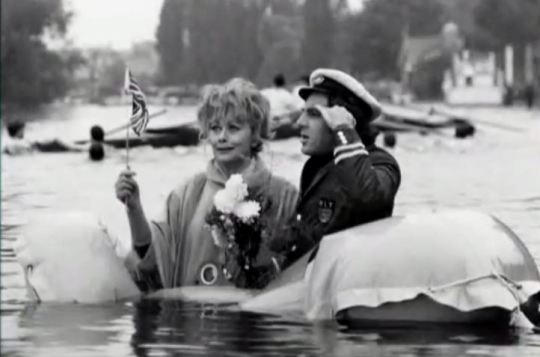
The stunt where Lucy and Anthony Newley sink into the River Thames was supposed to be shot in another location due to the fact that the Thames was reported to be polluted. At the last moment, Lucy decided it was funnier to actually do the stunt on location, despite the risks involved. As she did in “Lucy at Marineland” (S4;E1) and various other times in her career, Lucy did the stunt herself, not employing a stunt person or effects.

As Lucy and Tony's punctured raft is sinking in the Thames, Newley salutes the Union Jack and sings a chorus of of “There'll Always Be an England,” an English patriotic song written in 1939 by Ross Parker and Hughie Charles, and famously sung by Vera Lynn. In “Lucy Flies to London” (S5;E6), the episode of “The Lucy Show” that preceded this special, Mr. Mooney quotes the same song, dreading his secretary's frenetic presence in England's capital city.
youtube
Bronx-born singer / songwriter Phil Spector was commissioned to write and perform the title song “Lucy in London,” to which is set a montage of Lucy in and around London wearing mod fashions. A demo single of the song was recorded by Spector, but never released. The song comes about 15 minutes into the special and mentions The Dave Clark Five, who have actually not performed yet on screen. The montage features Lucy in mod fashions of the time and has cameos by top fashion models like Twiggy. The musical montage ends Act I.
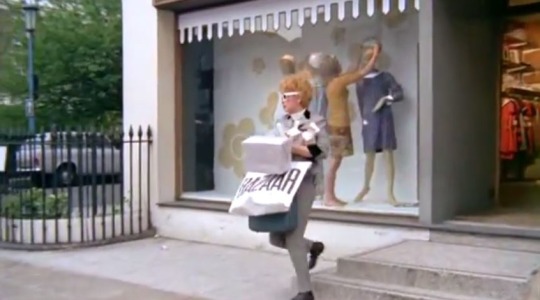
Several scenes were cut for time. The first was Lucy stepping out of Mary Quant's London boutique Bazaar with packages and mod sunglasses. She gets into Newley's sidecar and the two drive off.

The second involved Newley donning a tall black fur hat and demonstrating to Lucy how silly the changing of the guard at Buckingham Palace is. Both scenes turn up on the “Lucy Show” season 5 DVD documentary about the special.
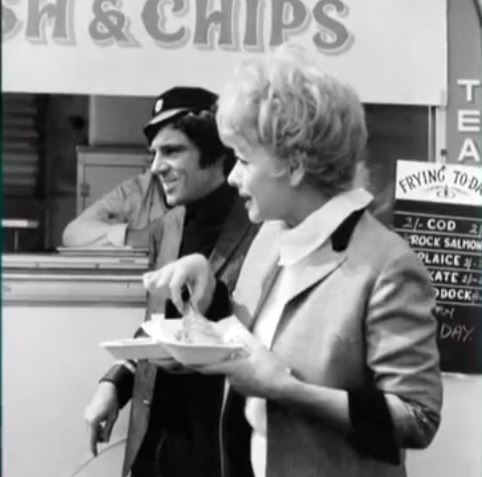
Another scene was filmed where Newley takes Lucy for a lunch of fish and chips, riding on a bicycle built for two. Only still photos remain of the scene which had Lucy trying to talk like a Cockney to a genuine London-born chip stall owner.
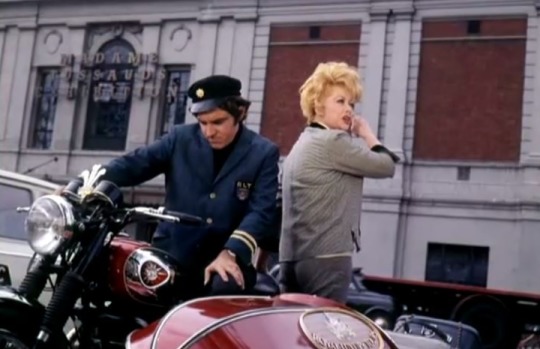
Madame Tussaud's Wax Museum was (and still is) one of London's busiest and most popular tourist attractions. The production was only allowed to film inside once the museum was closed and the last tourist had exited the building. In the Museum sequence, a wandering Lucy gets separated from her tour guide (Winifred Hyde White) and must be led to the Chamber of Horrors by the manager (James Robertson Justice) to catch up with her group. The scene called for a frightened Lucy to hit him over the head with a bottle. The production supplied candy glass prop bottles for the stunt, but somehow Lucy managed to pick up an actual glass bottle and Justice had to be hospitalized for stitches. Presently, Madame Tussaud's Wax Museums in New York City and Las Vegas feature figures of Lucille Ball as Lucy Ricardo.
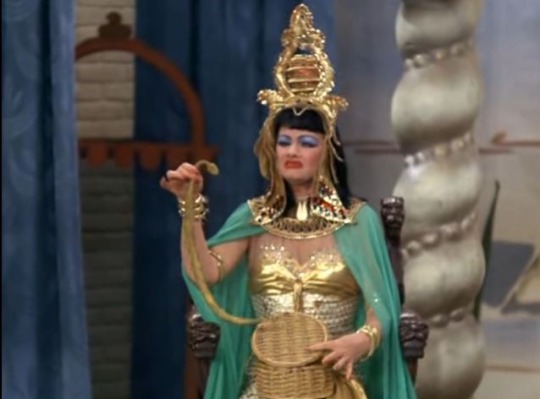
Before they go inside the waxworks, Newley teases Lucy that inside she'll find Cleopatra and her Mark Antony. Lucy played Cleopatra onstage back in Danfield with Viv as her Mark Antony. Before going in Newley says “TTFN.” When Lucy asks what that means, he replies “Ta ta for now.” TTFN was a favorite expression of Winnie the Pooh's pal Tigger. The voice of Tigger, Paul Winchell, guest starred on “The Lucy Show” just prior to this special. He once claimed that it was his idea to have Tigger say TTFN.

Inside the museum, Lucy tweaks the nose of Prince Philips' wax 'figger'. Prince Philip was mentioned recently in “Lucy with George Burns” (S5;E1) and several times on “I Love Lucy.” She also sees waxworks of Napoleon and Josephine. On an episode of “Here's Lucy,” Lucy Carter and Harry (Gale Gordon) play Napoleon and Josephine during a séance.
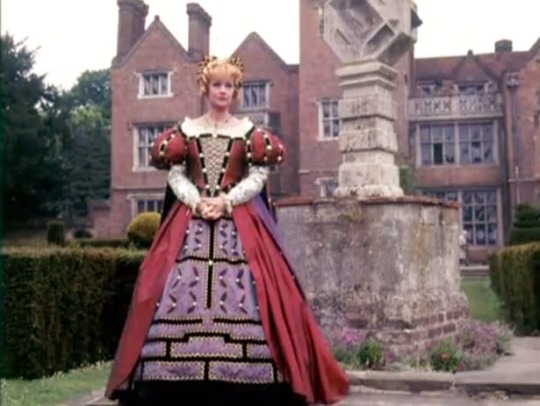
Great Fosters (not Grace Fosters!) is an English country manor from the Tudor period located in Egham, Surry, just outside of London. There is evidence that the de Imworth (later Fosters) family lived there as early as 1224. Now under the ownership of the Sutcliffe family, the historic building became a hotel in 1930, as it remains today, hosting tourists, wedding parties, and those looking for fine dining. When Lucy arrives they are hosting a Shakespeare Festival at their theatre in the gardens. Lucy brags to one of the actors (Peter Wyngarde) that she did Shakespeare's Much Ado About Nothing in high school. Lucy and Wyngarde rehearse a scene from The Taming of the Shrew with Lucy as Kate (her only line is “Never!”) and Wyngarde as Petruchio.

After Lucy flees taming by 'Petruchio' and runs from Great Fosters, Anthony Newley jokingly does an imitation of Stan Laurel saying “Well, Lucy, that's another fine mess you've gotten us into.”

In front of Lucy, Newley, and The Dave Clark Five (in morning suits and top hats) perform a medley of “London Bridge is Falling Down” and “Pop Goes the Weasel.” It is interesting to note that the London Bridge seen in the background is the old London Bridge (1831-1967). A year after filming, this bridge was dismantled and sold while a new version (that still stands today) was built to replace it. The old London Bridge was reassembled in Lake Havasu City, Arizona, opening in 1971, where it remains the number one tourist attraction.
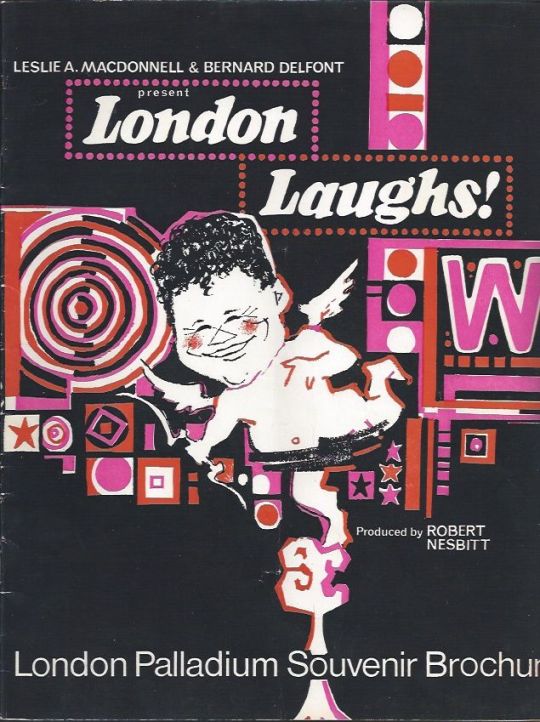
In Act IV, pulling up to the London Palladium, Lucy and Tony see the marquee for a show called London Laughs starring Harry Secombe, Jimmy Tarbuck, Thora Hird, Freddie Frinton, and Russ Conway. Instead, however, Newley takes Lucy to The Scala Theatre on Charlotte Street, off Tottenham Court Road. The theatre opened in 1903 seating 1,139 and boasts a large stage. Three years after “Lucy in London” filmed there, it was destroyed by fire and demolished. Today the site is the location of an apartment block.
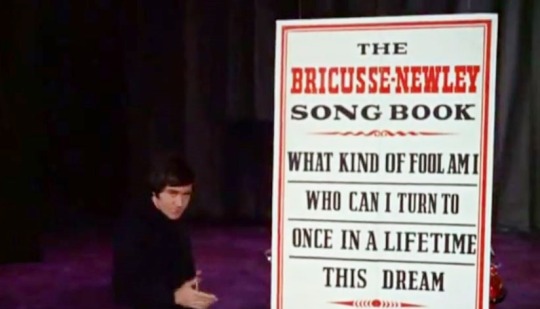
On the Scala stage, the special takes a slightly surreal turn with Newley suddenly presenting a full scale musical one-man show with lights, scenery, costume changes, and orchestra. He first sings “Fine Day in London” then “I'm Gonna Build a Mountain” (from Roar of the Greasepaint). He follows with “Once in a Lifetime” from Stop the World and “Nothing Can Stop Me Now,” also from Greasepaint.
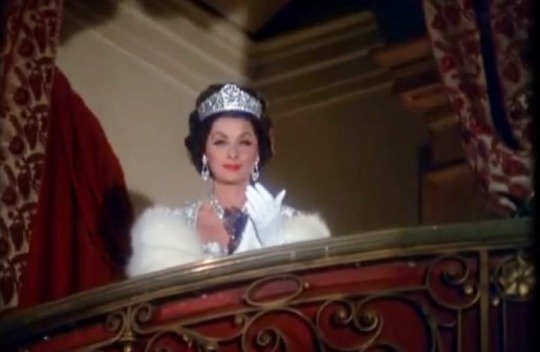
During “Look at That Face” (Greasepaint) he sings directly to Lucy, the Queen of Comedy, “the face that the world adores” and she becomes the Queen of England sitting in the Scala Theatre’s royal box. He ends the medley with “This Dream” (Greasepaint) and Lucy becomes the (male) orchestra conductor. After Newley leaves the stage, Lucy reappears as an Eliza Doolittle-type flower girl sitting in the front row of the balcony eating a piece of fruit.

The special then takes on an even more dreamlike quality with Lucy on stage doing a pantomime in a spotlight. It looks like Lucille Ball is wearing the same over-sized suit that she wore as the Professor in the “I Love Lucy” pilot and “The Audition” (ILL S1;E6). The very end of the special, still on the Scala stage, singing about her “One Day in London” Ball seems to drop the Lucy Carmichael character and speak directly from the heart as she addresses the camera. It is some of the most moving acting Ball has done on television thus far.

Although nominated as Best Actress in a Comedy for “The Lucy Show,” Lucille Ball was not able to attend the Emmy Awards Ceremony on May 22, 1966 as she was filming “Lucy in London.” In any case, she lost to Mary Tyler Moore in “The Dick Van Dyke Show.”
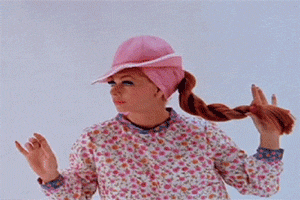
Viewership was high for the special (finishing as the most-watched telecast of the week) but critical responses were very poor, with Variety complaining: "What had promised to be one of the season's major specials turned out to be a major disappointment." Perhaps because of this, Ball opted not to pursue the creation of the remaining two specials in her contract. If the critics did not approve of her stepping outside of what she was known for, she would give them more of what they expected.
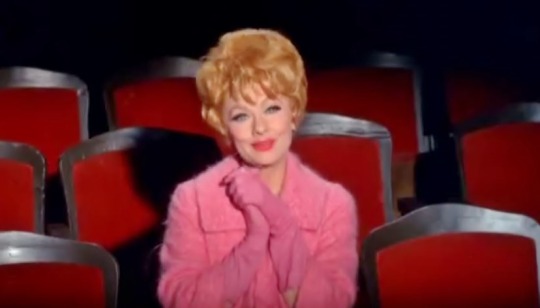
“Lucy in London” was aired just once – on October 24, 1966 - and was not seen again until the DVD release of the official fifth season of “The Lucy Show” as bonus material. As with “The 'I Love Lucy' Christmas Special,” “Lucy in London” was not included in “The Lucy Show” syndication package and is not counted in the official episode tally.
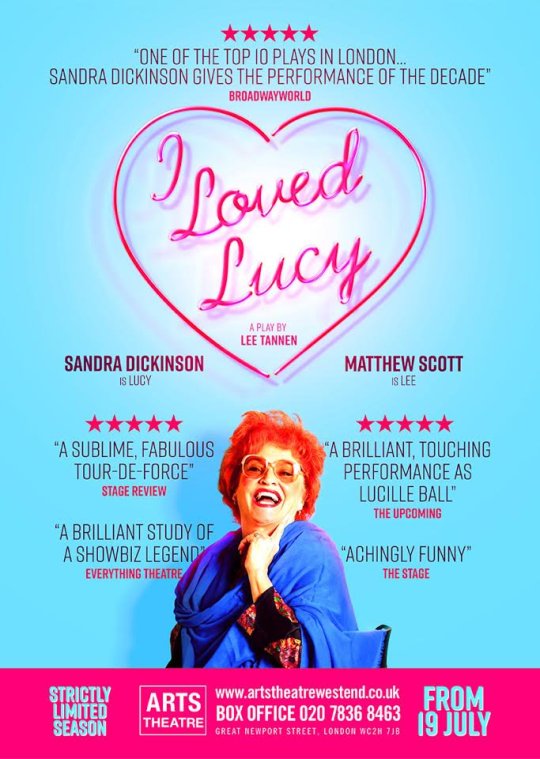
Although this special marked the only time Lucille Ball was seen on a London stage, after more than 50 years Lucy will once again be in London (sort of) when Lee Tannen's autobiographical play I Loved Lucy returns to London’s Arts Theatre during the summer of 2017. Sandra Dickinson plays Lucy and New Jersey's own Matthew Scott is Lee.

“Lucy in London” rates 4 Paper Hearts out of 5
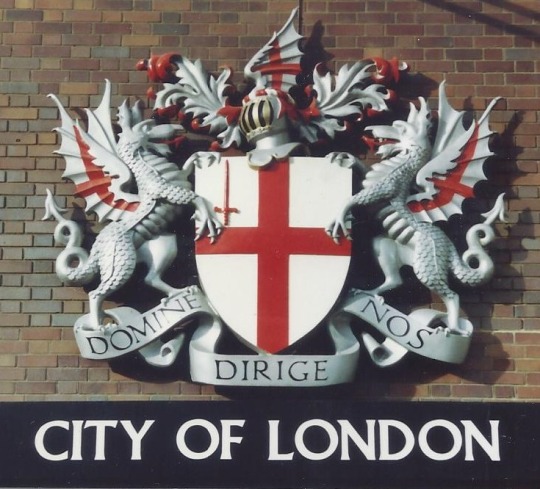
#Lucy in London#Lucille Ball#London#1966#CBS#TV#Anthony Newley#Peter Wyngarde#Winifred Hyde White#Frank Thornton#Heathrow Airport#The Taming of the Shrew#Great Fosters#Madame Tussaud's Wax Museum#Cleo Smith#Piccadilly Circus#River Thames#motorcyle#sidecar#Twiggy#Dave Clark Five#Edna Morris#Denis Gilmore#Mary Quant's Bazzar#Chrissie Shrimpton#Roy Rowan#Jenny Counsell#Bonnie Paul#John Stone#Jenny Boyd
10 notes
·
View notes
Text
Events 10.30
637 – Antioch surrenders to the Muslim forces under Rashidun Caliphate after the Battle of the Iron Bridge. 758 – Guangzhou is sacked by Arab and Persian pirates. 1137 – Battle of Rignano between Ranulf of Apulia and Roger II of Sicily. 1270 – The Eighth Crusade and siege of Tunis end by an agreement between Charles I of Sicily (brother to King Louis IX of France, who had died months earlier) and the sultan of Tunis. 1340 – Portuguese and Castilian forces halt a Marinid invasion at the Battle of Río Salado. 1485 – King Henry VII of England is crowned. 1501 – Ballet of Chestnuts: A banquet held by Cesare Borgia in the Papal Palace where fifty prostitutes or courtesans are in attendance for the entertainment of the guests. 1657 – Spanish forces fail to retake Jamaica at the Battle of Ocho Rios during the Anglo-Spanish War. 1806 – Believing he is facing a much larger force, Prussian Lieutenant General Friedrich von Romberg, commanding 5,300 men, surrendered the city of Stettin to 800 French soldiers commanded by General Lassalle. 1817 – The independent government of Venezuela is established by Simón Bolívar. 1831 – In Southampton County, Virginia, escaped slave Nat Turner is captured and arrested for leading the bloodiest slave rebellion in United States history. 1863 – Danish Prince Vilhelm arrives in Athens to assume his throne as George I, King of the Hellenes. 1864 – Second Schleswig War ends. Denmark renounces all claim to Schleswig, Holstein and Lauenburg, which come under Prussian and Austrian administration. 1864 – Helena, Montana is founded after four prospectors discover gold at "Last Chance Gulch". 1888 – Rudd Concession granted by King Lobengula of Matabeleland to agents of Cecil Rhodes led by Charles Rudd. 1894 – Domenico Melegatti obtains a patent for a procedure to be applied in producing pandoro industrially. 1905 – Czar Nicholas II of Russia issues the October Manifesto, granting the Russian peoples basic civil liberties and the right to form a duma. This was October 17 in the Julian calendar. 1918 – The Ottoman Empire signs the Armistice of Mudros with the Allies. 1920 – The Communist Party of Australia is founded in Sydney. 1925 – John Logie Baird creates Britain's first television transmitter. 1929 – The Stuttgart Cable Car is constructed in Stuttgart, Germany. 1938 – Orson Welles broadcasts his radio play of H. G. Wells's The War of the Worlds, causing anxiety in some of the audience in the United States. 1941 – World War II: Franklin D. Roosevelt approves U.S. $1 billion in Lend-Lease aid to the Allied nations. 1941 – One thousand and five hundred Jews from Pidhaytsi (in western Ukraine) are sent by Nazis to Bełżec extermination camp. 1942 – Lt. Tony Fasson, Able Seaman Colin Grazier and canteen assistant Tommy Brown from HMS Petard board U-559, retrieving material which would lead to the decryption of the German Enigma code. 1944 – Anne and Margot Frank are deported from Auschwitz to the Bergen-Belsen concentration camp, where they die from disease the following year, shortly before the end of WWII. 1945 – Jackie Robinson of the Kansas City Monarchs signs a contract for the Brooklyn Dodgers to break the baseball color line. 1947 – The General Agreement on Tariffs and Trade (GATT), which is the foundation of the World Trade Organisation (WTO), is founded. 1950 – Pope Pius XII witnesses the "Miracle of the Sun" while at the Vatican. 1953 – Cold War: U.S. President Dwight D. Eisenhower formally approves the top secret document National Security Council Paper No. 162/2, which states that the United States' arsenal of nuclear weapons must be maintained and expanded to counter the communist threat. 1960 – Dr.Michael Woodruff performs the first successful kidney transplant in the United Kingdom at the Edinburgh Royal Infirmary. 1961 – The Soviet Union detonates the Tsar Bomba over Novaya Zemlya; equivalent to 57 megatons of TNT, it remains the largest explosive device ever detonated, nuclear or otherwise. 1961 – Due to "violations of Vladimir Lenin's precepts", it is decreed that Stalin's body be removed from its place of honour inside Lenin's tomb and buried near the Kremlin Wall with a plain granite marker instead. 1965 – English model Jean Shrimpton causes a global sensation by wearing a daring white minidress to Derby Day at Flemington Racecourse in Melbourne, Australia. 1965 – Vietnam War: United States Marines repel an intense attack by Viet Cong forces and killing 56 guerrillas near Da Nang. 1970 – In Vietnam, the worst monsoon to hit the area in six years causes severe floods, kills 293, leaves 200,000 homeless and virtually halts the Vietnam War. 1973 – The Bosphorus Bridge in Istanbul, Turkey is completed, connecting the continents of Europe and Asia over the Bosphorus for the second time. 1974 – The Rumble in the Jungle boxing match between Muhammad Ali and George Foreman takes place in Kinshasa, Zaire. 1975 – Prince Juan Carlos becomes Spain's acting head of state, taking over for the country's ailing dictator, Gen. Francisco Franco. 1980 – El Salvador and Honduras sign a peace treaty to put the border dispute fought over in 1969's Football War before the International Court of Justice. 1983 – The first democratic elections in Argentina after seven years of military rule are held. 1985 – Space Shuttle Challenger lifts off for mission STS-61-A, its final successful mission. 1987 – In Japan, NEC releases the first 16-bit (fourth generation) video game console, the PC Engine, which is later sold in other markets under the name TurboGrafx-16. 1993 – The Troubles: Loyalists carry out a mass shooting at a Halloween party in Greysteel, Northern Ireland, killing eight civilians, six Catholics and two Protestants. 1995 – Quebec citizens narrowly vote (50.58% to 49.42%) in favour of remaining a province of Canada in their second referendum on national sovereignty. 2005 – The rebuilt Dresden Frauenkirche (destroyed in the firebombing of Dresden during World War II) is reconsecrated after a thirteen-year rebuilding project. 2014 – Sweden is the first European Union member state to officially recognize the State of Palestine. 2015 – Sixty-four people are killed and more than 147 injuries after a fire in a nightclub in the Romanian capital Bucharest.
0 notes
Text
“If you wear a short enough skirt, the party will come to you.” Dorothy Parker
___________________________________________________________
The miniskirt. Iconic, yet in fashion terms, not that ancient. Like other recent inventions, its genesis and history are quite interesting.
Of course there have been forms of mini skirts throughout the ages and cultures, from Roman soldiers to the Duan Qun Miao women of China (below, circa 1900).

Closer to us, in entertainment and sports, both function and functionality of the item made some forms of shorter-than-the-norm skirts acceptable; we could name name Josephine Baker or figure skater Sonja Henie (below, 1939).

However on the street, for the girl next door, the short skirt as a wardrobe staple is a product of the 1960’s. By then the baby boom generation has reached its late teenage years; it has more money, more free time, and simply more freedom than those who came before, and it will use all this to revolutionise society though a broad range of artistic, cultural, political, philosophical experimentations, which we should not forget, are often interconnected.
It is said that when the mini-skirt appeared on the streets, men were driven crazy by the sight of bare legs right before their eyes. It seems strange for us today, well used to seeing flesh in traditional media, in social media even more, and more generally at your local bar.
The creation theories
Who invented it? The jury is still out. Common wisdom will say Mary Quant, while acknowledging that Courreges might also have a valid claim. However before looking at these two key figures, we should mention that there are alternative theories:
– English language literature on the topic does not seem to be aware that a French stylist called Jacques Delahaye tried to launch it in 1963, but his bold attempt resulted in a flop (Yvonne Deslandres et Florence Müller, Histoire de la mode au xxème siècle, p. 256).
– Another hypothesis is reported by Barbara Hulanicki of the London boutique Biba, hangout of musicans and artists, and known for its stylishly decadent atmosphere and lavish decor. She states that in 1966 she received a delivery of stretchy jersey skirts that had shrunk drastically (to 10 inch long) in transit. She sold them regardless…and they just flew off the shelves, thereby launching a trend. Did you know that Anna Wintour started here career there?
– For Marit Allen, editor of the “Young Ideas” pages for UK Vogue, the credit should go to John Bates. The latter had designed mini-coats and dresses for Emma Peel (played by Diana Rigg) in the TV series The Avengers. In January 1965 Bates’s “skimp dress” with its “short-short skirt” was featured in Vogue, and would later be chosen as the Dress of the year.
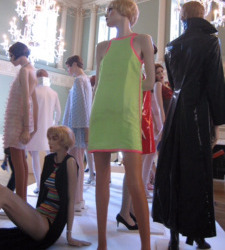
Various dresses from the 1969’s by Bates. The green one is from 1966
– It has also been allleged that Mary Quant had purchased a short skirt at the “Boutique des arts” in St Tropez, and only later did she launch it in the UK.
Regardless of the validity of these claims, the role played by Quant and Courreges in developing the miniskirt cannot be understated.
Andre Courrèges was a pioneer in the fashion world, designing space-age outfits using colours like silver, white, contrasting with bright reds. Some sources claim he had been designing miniskirts as early as 1961 when he launched his couture house. What is for sure is that in January 1965 his Spring/Summer collection featured short skirts, four inches above the knee. He always made it clear that he considered himself the inventor of the garment, relegating Quant’s role as merely having “commercialised” it.
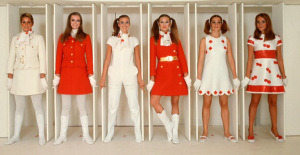
The unmistakeable Courrege style
Mary Quant and two friends (one would later become her husband) opened a boutique they called Bazaar on King’s Road in Chelsea, London’s artist district. The shop sold affordable, brightly coloured clothes perfect for the youths in search of a more modern style. Examples of what they had on the shelves: skinny rib jumpers, coloured tights, hipster belts, PVC garments and sleeveless crochet tops and hats.
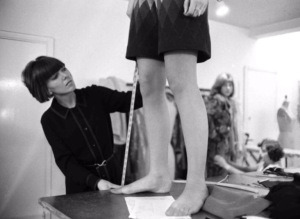
Mary Quant
Did she invent the miniskirt? She is humble about it and says “It wasn’t me or Courrèges who invented the miniskirt anyway, it was the girls in the street who did it.” Apparently as she herself wore very short skirts, her customers kept on requesting even shorter hemlines for themselves. She however coined the name “miniskirt” by reference to her favourite car, the Mini.
The (very) critical reception
If the street adopted it, the trend was helmed by a range of celebrities, notably Twiggy in the UK, and Sheila, France Gall and Françoise Hardy in France.
The daring fashion move did not go unchallenged, as we know from the consierable shock caused by the appearance of Jean Shrimpton wearing a Colin Rolfe short dress in October 1965 at the Melbourne Cup Carnival in Australia. This has been hailed as the pivotal moment in the history of this garment.

In a Europe divided by the iron curtain, defying all logic, the Polish communist party approved the right to use it, while the Dutch parliament banned it.
Coco Chanel, who in her days had shortened women’s skirt, found it “disgusting” (“Je la trouve sale”) as it uncovered what for her was the ugliest part of the human body, the knee.
French TV prsenter Noëlle Noblecourt was reportedly fired for exposing her knees to the viewers (decades later in will transpire that the skirt had been used as a pretext, the real reason for losing her position is that she refused…well, other types of positions, with the TV channel boss).
Staying in France, here is a clip showing the reaction of the people on the street, to the new type of skirt. Miniskirt France 1966
Here is a transcript of some of what is said at around 1.50:
“Does she think she’s at the beach?”
“Horrible, horrible…how awful is that”
“Get up up the stairs”
“You’re going to catch a cold”.
“It’s cute. Have to say that it’s nice for men to look at…it’s fashion”
“She is crazy. She’s not normal”.

The hemline has kept on fluctuating since. Some collections leave it out, others are “…all legs, legs, legs” (Giambattista Valli describing his latest couture show). In my opinion, regardless of what designers do, on the street the miniskirt never disappeared, but instead its use has evolved to be more associated with the context or the occasion: for the nightclub more than for going shopping, in August in Saint Tropez more that in February in St Germain…
The Dsquared2 woman
The miniskirt is an unavoidable piece of Dsquared2 clothing. The D2 woman being sexy, confident, daring, she can wear during the day in denim or cargo-style, and at night, in noble fabrics like silk or leather. DSQ miniskirts are amazing with flats or heels, but also with runners. See the below slideshow for some examples.
This slideshow requires JavaScript.
And you might even get a discount on your restaurant bill, as at this place in China. The shorter the skirt, the biggest the discount (up to 90% off!)

Note that if you’re planning a holiday in Swaziland, leave your miniskirts at home as they have been banned…in 2012.
Lastly, a photoshop photo seen on Fashion TV: Dan Caten as Twiggy, in a Quant minidress.
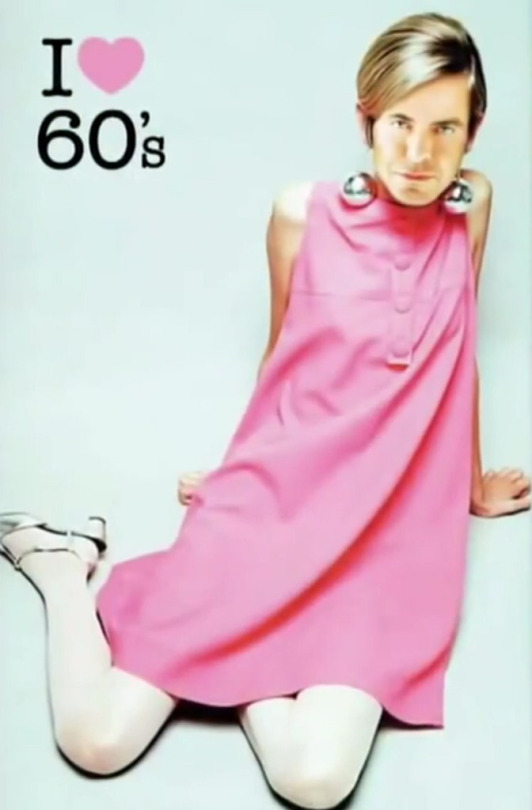
________________________________________________________________ If you liked this post, thanks for clicking the like button or leaving a comment, and don’t forget to follow us on Instagram!
The miniskirt, from Quant and Courreges to Dean and Dan "If you wear a short enough skirt, the party will come to you." Dorothy Parker ___________________________________________________________…
1 note
·
View note